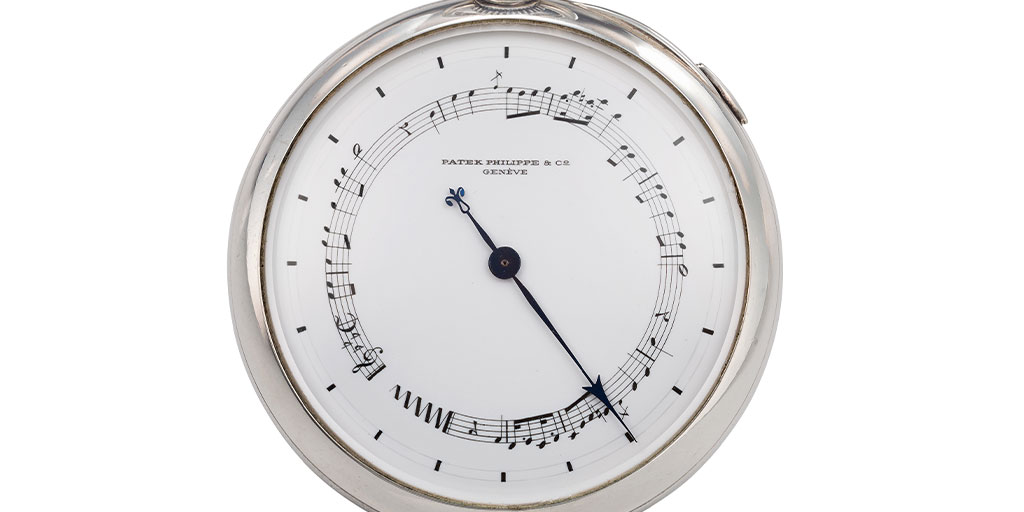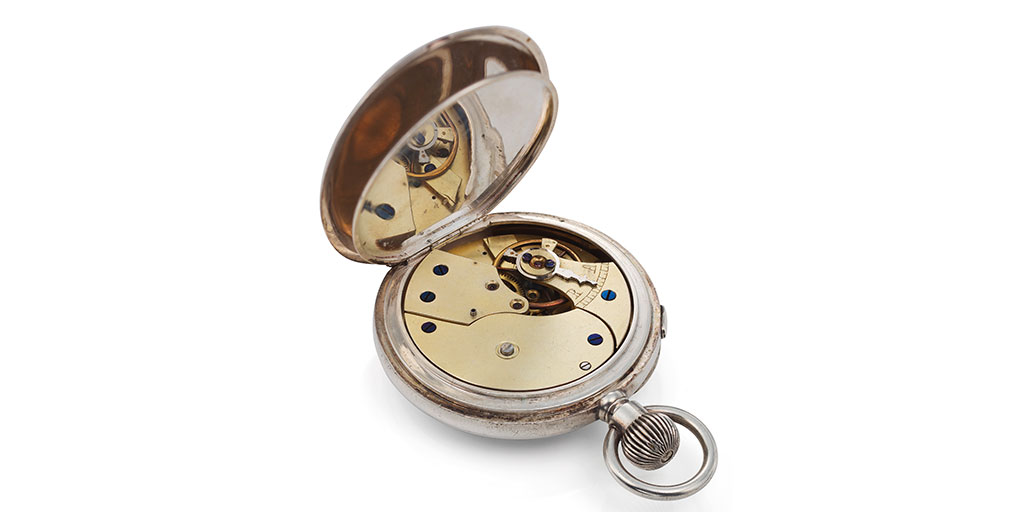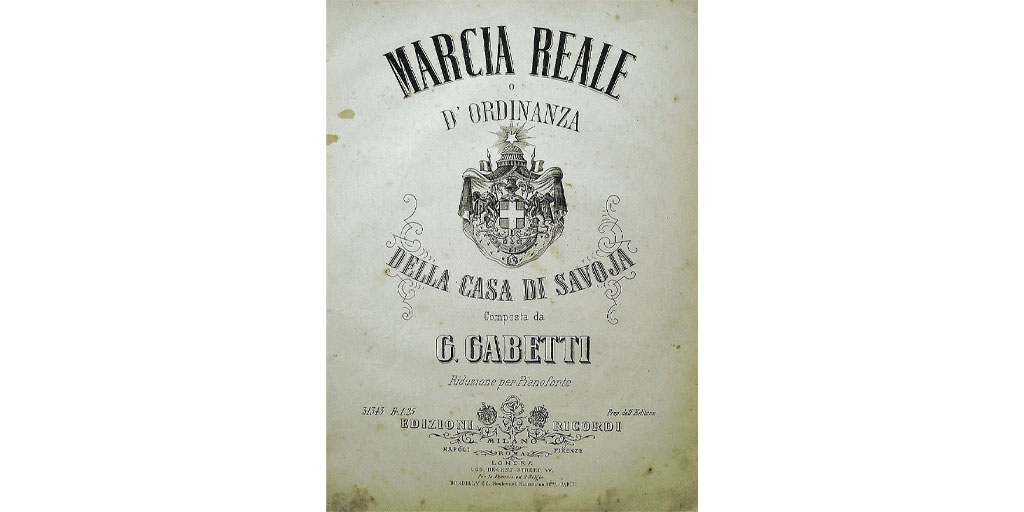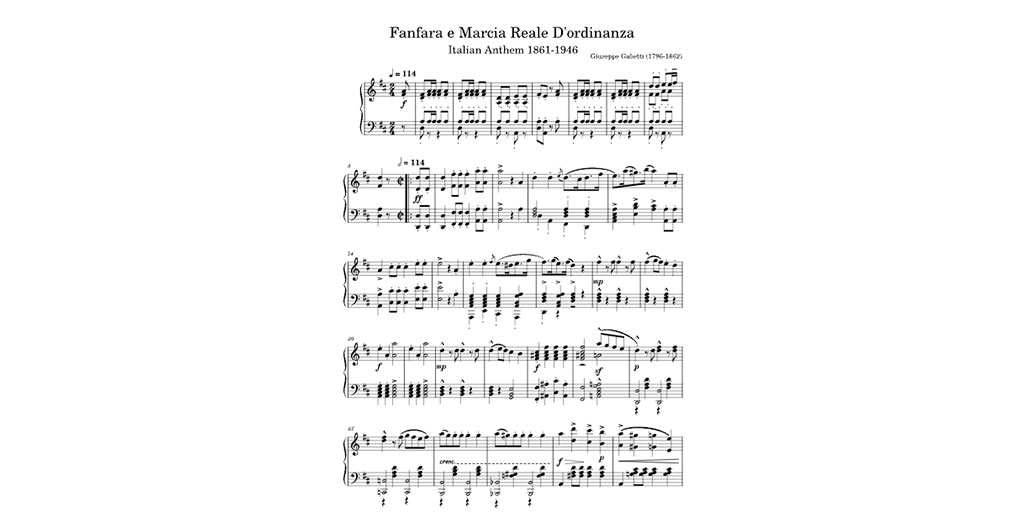One of the rarest Patek Philippe complications does not tell the time. Instead, this complicated mechanism helps a musician play rhythms accurately by marking beats per minute. In other words, it’s a metronome. Today, many musicians will use an app on their iPhone to help keep a steady time when practicing music; although, traditionally, we might think of a device with a pendulum that swings back and forth placed on top of a piano. Metronomes have been used for many centuries, but in 1815, a German inventor, Johann Maelzel patented it as a tool for musicians. The word ‘metronome’ comes from the Greek word metron, meaning to ‘measure’, and nomos meaning ‘regulating’.

A steady tick to mark a beat of time can also be provided by a chronograph mechanism, more commonly found in watchmaking. Why Patek Philippe decided to make around a dozen metronomes between 1880 and 1890 is a mystery. We assume these metronomes, in the form of an open-faced pocket watch would have been used by conductors of an orchestra. As with all Patek Philippe products, this would have been an expensive item and limited to a privileged few.

The metronome is fitted with a duplex escapement caliber 18”’ and features a half-second jump hand revolving around the dial in 10 seconds. When the metronome is engaged (via the slide on the case), the hand loudly ticks and stops at each of the 20 sector intervals (every half second), resulting in 120 beats per minute. The energy is stored by the mainspring and only released by engaging the slide, once slid back the energy is stored in the very large balance until the next time one wishes to use it. The case is made of silver in four parts and is 51 mm in diameter and 17 mm thick.

The biggest mystery is why each of these rare pieces displays the same excerpt of music delicately painted on the enamel dial: la Marcia Reale (Royal March) for the House of Savoia by Giuseppe Gabetti which was the national anthem of Italy from 1861 until the fall of the monarchy in 1946, though it was briefly replaced and then reinstated between 1943 and 1944. The music is also sometimes referred to as Fanfara Royal or Marcia Reale d’Ordinanza (Royal March of Ordinance). It was originally composed in 1831 by order of Charles Albert of Sardinia for the House of Savoia to be the Anthem of Sardinia. Did Patek Philippe ‘sponsor’ a series of musical events in Italy, or were they made to commemorate a special performance of the Italian national anthem? We may never know.

This type of metronome is so rare that an example was exhibited in the Legendary Watches from Patek Philippe’s Private Watch Museum exhibition in 1989, which showcased some of the most important pieces ever made by the brand. The exhibition was part of the special watch auction to commemorate Patek Philippe’s 150th anniversary. The metronome on display would have been one of the earlier vintage pieces that the Stern family started to collect for their museum.

To date, there are seven known Patek Philippe metronomes. The first, No. 1 is in the Patek Philippe Museum and was first shown publicly at the 1989 exhibition mentioned above. Another example was owned by the Time Museum (inventory number 2616). Below is a list of the known examples:
- No.1 is in the Patek Philippe Museum. It was exhibited at ” Legendary Watches from Patek Philippe’s Private Watch Museum” in 1989 (exhibit no. 498), and is also described and illustrated in Patek Philippe Museum, Patek Philippe Watches, Volume I by Patek Philippe, p. 291
- No. 2, was sold at Christie’s Geneva in May 2014
- No. 4, is in a private collection
- No. 5, was formerly in the Time Museum (Inv. 2616), and sold at auction in 2002
- Believed to have been sold at auction in Geneva in 1980
- No. 58 sold at Christie’s Dubai 2018 (note this example was missing the original slide button which would be impossible to replace)
- No. 100, the present watch, possibly the last example made based on the number 100 engraved on the case cover.
Although each of the known Patek Philippe metronomes displays the same piece of music, they are not exactly the same. Different hand designs can be seen, some feature a fleur de lis as in this example, and others have a ‘trident’ or ‘leaf’ finish.

The person who is fortunate to own this rare and important Patek Philippe metronome will not only be owning a piece of history, but also a museum-worthy work of functional art.
March 2024



